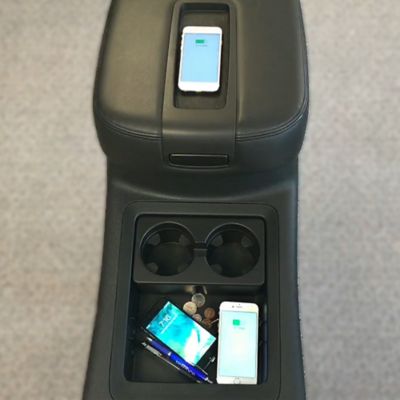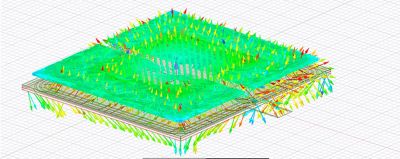-
-
Software gratuito per studenti
Ansys potenzia la nuova generazione di ingegneri
Gli studenti hanno accesso gratuito a software di simulazione di livello mondiale.
-
Connettiti subito con Ansys!
Progetta il tuo futuro
Connettiti a Ansys per scoprire come la simulazione può potenziare la tua prossima innovazione.
Paesi e regioni
Customer Center
Supporto
Partner Community
Contatta l'ufficio vendite
Per Stati Uniti e Canada
Accedi
Prove Gratuite
Prodotti & Servizi
Scopri
Chi Siamo
Back
Prodotti & Servizi
Back
Scopri
Ansys potenzia la nuova generazione di ingegneri
Gli studenti hanno accesso gratuito a software di simulazione di livello mondiale.
Back
Chi Siamo
Progetta il tuo futuro
Connettiti a Ansys per scoprire come la simulazione può potenziare la tua prossima innovazione.
Customer Center
Supporto
Partner Community
Contatta l'ufficio vendite
Per Stati Uniti e Canada
Accedi
Prove Gratuite
Ansys Blog
January 8, 2019
Wireless Charging Technologies: Magnetic Resonance vs. Magnetic Induction vs. RF Harvesting
Before he died, Nikola Tesla promised a world built on wireless charging technology. This dream is starting to become a reality thanks to magnetic resonance, magnetic induction and radio frequency (RF) energy harvesting.
But which wireless charging method is best suited for each industry application?
Ron-Chi Kuo, director of System Architecture at PowerSphyr — an Ansys Startup Program member — outlines how to choose the best wireless charging methodology for a given industry application.
PowerSphyr’s SkyCurrent phone
case enables iPhones 7/8 to be
charged by magnetic resonance
and magnetic induction
RF Energy Harvesting Is the Best Wireless Charging Method for the IoT Industry
RF energy harvesting offers the best spatial freedom.
In fact, PowerSphyr has RF energy harvesting receivers that can power devices up to 40 feet from the energy transmitter. The receiver and transmitter don’t even need line-of-sight to transfer power.
Kuo explains that the challenge with RF energy harvesting is that regulatory standards limit the amount of power that can be transferred over these frequencies.
“Even though RF energy harvesting has the most spatial freedom, it can’t charge higher power receivers — like a cellphone — unless we are willing to endure low charging rates,” says Kuo.
So, RF energy harvesting is best suited to power sensors and small devices on the internet of things (IoT). RF harvesting ensures that the IoT device gains power without maintenance crews needing to replace batteries.
Magnetic Induction Offers Wireless Charging in a Simple Setup
Magnetic induction is the wireless charging method most consumers are acquainted with.
Most modern cellphones aim to be compliant with the magnetic induction standard, Qi.
Kuo explains that this charging method is popular because it is easy to implement. However, it doesn’t have the best user experience.
“The user experience suffers as the Qi device and charging table must be precisely aligned,” says Kuo. “Once you change the charging position, the power transfer efficiency drops. This means you need more time to charge the device.”
Lower efficiency isn’t the only effect caused by magnetic induction misalignment; the system also faces potential thermal challenges.
Since there is a strong business incentive for backward compatibility, magnetic induction charging will likely remain popular for the next few years. However, AirFuel’s magnetic resonance standard offers an improved user experience that might one day make the Qi standard obsolete.
Magnetic Resonance Offers Wireless Charging with Improved Spatial Freedom
Wireless chargers that implement PowerSphyr’s magnetic resonance methods are more versatile.
This is partly because magnetic resonance offers improved thermal management and multiple device charging.
“When the transmitting coil and receiving coils resonate at 6.78 MHz, the power transfer efficiency is maximized,” explains Kuo. “This delivers sufficient power to the devices over longer distances than magnetic induction.”
This prototype in-cabin wireless
charger for automotive applications
charges devices using magnetic
resonance or magnetic induction
One of the biggest user experience improvements of magnetic resonance is that it does not require receiver and transmitter alignment. In fact, the charger can still send power to a device from an inch away.
Kuo explains that the best applications for these chargers are when you can’t expect a device and receiver to align. For example, imagine charging a messy shelf full of power tools at a worksite, or a family of cellphones sitting in the glovebox of a moving car.
PowerSphyr’s Wireless Chargers Utilize both Magnetic Resonance and Induction
So, which wireless charging methodology does PowerSphyr design for?
It depends, because PowerSphyr offers fully customized design projects and has launched its own consumer products.
The charging methodology of a custom design project is up to PowerSphyr’s customer. However, PowerSphyr’s consumer products – like the SkyCurrent III — use both magnetic resonance and induction methodologies.
PowerSphyr’s SkyCurrent III charging pad can charge
devices using magnetic resonance or magnetic induction
Will Wright, founder and chief technology officer of PowerSphyr, says, “This means our charger can cover various technologies, with backward compatibility and multiple devices — while providing an excellent user experience.”
PowerSphyr’s chargers can charge up to eight AirFuel devices wirelessly through magnetic resonance. The charger can also power Qi devices that align with its induction charging areas.
To get these two technologies to play together nicely, PowerSphyr used Ansys HFSS.
Kuo says, “Ansys software helps us calculate all the possibilities. It can simulate different materials and complicated models in a 3D environment over a certain frequency range. That can reduce a lot of human calculations and provide accurate predictions of the magnetic fields or radiation generated by the system.”
Wireless charging simulation made in HFSS.
The simulation shows a uniform magnetic field
generated by dual-mode coils. These coils are used
for magnetic resonance or magnetic induction charging
PowerSphyr uses HFSS to simulate potential use cases for various applications — like SkyCurrent III, the multi-mode charge pad. HFSS helps predict the performance of the system so PowerSphyr can make better design decisions early in product development.
To learn more, visit PowerSphyr and Ansys at CES, or read about Ansys' solutions for the Industrial Internet of Things (IIoT). To try Ansys HFSS for your new technology, read up on the Ansys Startup Program.



